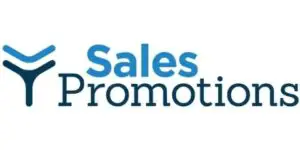Table of Contents
*This post may contain affiliate links. As an Amazon Associate we earn from qualifying purchases.
When was the last time your company sat down and evaluated the business? Really explored what was going right and what could possibly change the trajectory of the business success?
Every business should not only be aware of what a SWOT analysis is but should be evaluating their businesses by utilizing a SWOT analysis on a regular basis.
SWOT stands for Strengths, weaknesses, opportunities and threats. Basically as a business you evaluate what your internal strengths and weaknesses are and based on those what your external opportunities and threats are or could be.
[amazon fields=”0134426290″ value=”thumb” image_size=”large” image_align=”center”]
[amazon fields=”0134426290″ value=”button”]
SWOT a Useful Strategic Planning Tool
Doing a SWOT analysis on a regular basis as the business environment changes can be a very useful strategic planning tool. For example, you discover a weakness that might be an

easy fix to make you more competitive in the marketplace. Or you recognize a new competitive product enhancement is going to be a very real threat to your revenue growth if not addressed.
I’ve always used a SWOT analysis in my professional life, as a marketing manager and as a business owner.
Not too long ago my team sat around the conference room table and went through our own SWOT analysis. I am always interested and sometimes surprised in how others on the team see our business. And this time was no exception. Over the last 18 months we have been in a change and growth mood.
And to be honest, I thought I had articulated the plans well to the team. Appears I wasn’t as clear as I thought. If you’re not all working towards a common goal, then you may not make the goal at all!
Steps for SWOT Analysis
So what are the steps to take for an effective SWOT analysis?

The first step is making sure your team is aware that all comments are welcome. It won’t do any business any good if all you hear is what you want to hear.
In looking at the strengths of the business it’s best to look at what sets you apart from your competition. What are you doing better, different? How do you excel? Are you faster to respond? Does your product or service have attributes that no one else does?
There are a lot of products and services for that matter that are very similar if not identical so what makes you buy one over another one? Why that one? Maybe they aren’t exactly identical and there is one small thing that you like better. Maybe it’s not the product at all but the process or the people that make you buy one over the other.
[amazon fields=”1522859276″ value=”thumb” image_size=”large” image_align=”center”]
[amazon fields=”1522859276″ value=”button”]
What’s your Differentiator?
For instance, let’s look to another of our articles recently published about Logo recognition. It talks about Avis Rent-a-Car and I too worked there. It was where Kevin and I met many years ago. And he was right in the article about the logo recognition. He was also right that there had to be a differentiator in the rental car business. Think about it there is not that much difference between car rental companies.
So the one key strength for Avis was that they were second in the marketplace. So we built on the perception that our employees work harder to make the experience better than our competition. And when the company was “employee-owned” the campaign took that premise one step further – because we’ll all owners “we try even harder”.
Even in a business that seems like everyone has or does the same thing you can find a “nugget” of difference. That’s how brainstorming those strengths with your team can help your organization excel.
What about the limitations your business organization has? Evaluating the internal weaknesses that a business faces can save the business in the long run.
Weakness Can Become Threats
So what are your weaknesses? Is it product inventory? Product variety? Location? Pricing challenges? Profit challenges? Personnel issues? Reputation? Inferior product or service? Outdated technology? What do our customers complain the most about? What could we improve?
The weaknesses in your organization if not confronted can become real Threats to future growth. Many companies have not taken the technological changes in the marketplace seriously enough and have either lost market share or gone out of business as a result. Anyone remember Blockbuster?
Walk in Your Customer’s Shoes as Part of SWOT Analysis
One key way to evaluate the strengths and weaknesses of your business (and your competitors) is to truly walk through each touch point of the customer experience. From a

customer walking into your business or speaking to someone on the phone or visiting the website and evaluate it as if you were the customer. How did you do? Are all questions answered efficiently, professionally? Was everything easy to find? Was it an enjoyable experience? Was the merchandise of high quality for the price paid? What about follow-up?
Many years ago I did an analysis for a cruise line on how they responded to requests for information. It was a very general request – please send me a brochure about Caribbean Cruises. Some were great. I received the brochure in the mail days later. Some included a cover letter that highlighted some of their key strengths.
A few I never received. Luckily it wasn’t the company I was “spying” for but it did point them to a possible weakness in a competitor and area where they could use it as an opportunity.
In my mind, the smart companies sent more than I had asked for (sent a Europe brochure for instance) and the really smart ones included a special offer.
I had already expressed interest so why not entice me to buy now versus sometime in the future from someone else. Some offered limited time offers (smart) for free upgrades or discount offers. If I had truly been in the market for a cruise at the time I believe I would have taken advantage of an offer.
So maybe your analysis will help you find a new niche or product enhancement that is a new opportunity for growth.
[amazon fields=”1449546757″ value=”thumb” image_size=”large” image_align=”center”]
[amazon fields=”1449546757″ value=”button”]
Use Analysis to Identify Key Opportunities
As you can see the SWOT analysis is your opportunity to take a hard look at the marketplace, the environment and your competitors and identify those areas to take advantage of.
The next area to evaluate is the external opportunities you may be missing. How is the market changing? Do we have a product or service that we have not really pursued effectively? Are there any economic or regulatory changes that could be helpful to the business growth? Is there a way to acquire resources we don’t have? Merge/buy a competitor or supplier perhaps?

The final area of the SWOT analysis is the one that can truly take you out of the game. The threats that you may not see coming if you are not paying attention. Now, in some cases threats are totally out of your control. Take weather issues. This past year many of us have seen the weather impact our businesses. From hurricanes to floods to snow, just about every part of the country had some disruptions. But understanding your threat can help you minimize the damage. I know hurricanes are an issue for me. I have a generator and was able to get back up and running pretty quickly but I now realize I need two generators and will be getting another one before this season begins. A threat I hope won’t come but one I want to be better prepared for.
Of course, there are many other areas that can be unforeseen threats to a business. For instance, new regulations, supplier issues (a few years ago we had some major inventory issues due to a strike at the Los Angeles port), economic downturns, financing and even competitive growth or changes.
If you do this analysis on an annual basis it can help you minimize the negative long-term effects and help to determine where you may need to direct your attention to focus your resources, energy and promotions.

